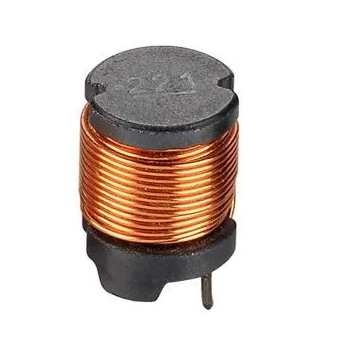In modern electronic technology, adjustable inductors play an important role. They are widely used in different fields, such as semiconductor radios, televisions, audio systems, etc. This article will take an in-depth look at the applications and internal structures of several commonly used adjustable inductors.
Oscillation coil in semiconductor radio
In a semiconductor radio, the oscillating coil is one of the core components. Together with components such as variable capacitors, it forms the oscillation circuit of the radio. The function of this circuit is to generate a local oscillator signal of a specific frequency, which is usually 465kHz higher than the radio signal received by the input tuning circuit. To improve performance and reduce interference, the oscillating coil is usually placed inside a metal shield. Its internal structure includes nylon bushing, I-shaped magnetic core, magnetic cap and pin base, etc. The winding made of high-strength enameled wire wound on the I-shaped core is the key part. Its unique feature is that the position of the magnetic cap can be adjusted by rotating, thereby changing the distance between it and the coil and achieving precise adjustment of the inductance.
Horizontal oscillation coil in TV
In early black and white televisions, the role of horizontal oscillation coils was crucial. It forms a self-excited oscillation circuit together with peripheral resistor-capacitor components and row oscillation transistors. This circuit can generate a rectangular pulse voltage signal with a frequency of 15625HZ, which is the basis of the TV display function. A distinctive feature of the row oscillation coil is that there is a square hole in the center of its magnetic core for inserting the row synchronization adjustment knob. By rotating the horizontal synchronization adjustment knob, the distance between the magnetic core and the coil can be changed, thereby adjusting the inductance and ensuring that the horizontal oscillation frequency is stable at 15625HZ. This process works closely with the automatic frequency control circuit (AFC) to achieve synchronous oscillation.

Linear linear coils in TV sets
The application of horizontal linear coils in televisions cannot be ignored. It is a special nonlinear magnetic saturation inductor coil whose inductance decreases as the current increases. In television sets, it is usually connected in series in the line deflection coil loop. The main function of this coil is to use its magnetic saturation characteristics to compensate for the linear distortion of the image, thereby improving image quality. Linear linear coils are wound with enameled wire on an "I"-shaped ferrite high-frequency core or ferrite rod. Additionally, there are adjustable permanent magnets next to the coils. By adjusting the relative position of the permanent magnet and the coil, the coil inductance can be precisely controlled to achieve linear compensation of the image.
